Ever wondered if a caiman is just a fancy word for crocodile? Dive into the world of these fascinating reptiles! This post will be your one-stop guide to all things about caiman, from their origins and species to their surprising temperament and growth rates.
Content Table
We’ll uncover the most popular types of caiman and share some truly wild facts about these prehistoric predators. Finally, we’ll settle the age-old debate: caiman vs. alligator. Buckle up and get ready to be amazed by the wonders of the caiman.
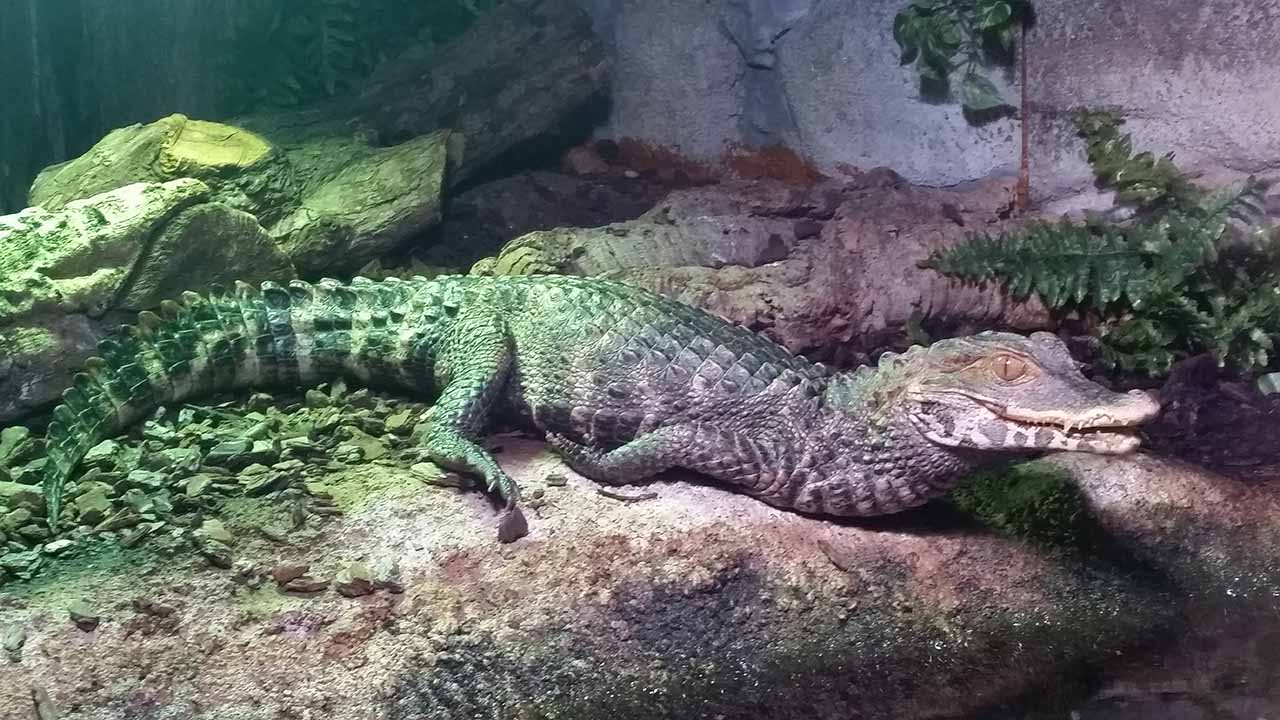
What is a Caiman?
A caiman is NOT a crocodile.
Caimans are reptiles that belong to the Alligatoridae family and are closely related to crocodiles. They are native to Central and South America and are known for their distinct appearance and behavior.
- Origin and Habitat
Caimans can be found in various habitats, including rivers, lakes, and swamps. They are primarily found in countries such as Brazil, Argentina, and Venezuela.
- Species
There are six different species of caimans, including the spectacled caiman, the yacare caiman, and the black caiman. Each species has its unique characteristics and range.
- Temperament
Caimans are known for being aggressive predators, hunting for fish, birds, and small mammals. They have a powerful bite and should be cautiously approached in the wild.
- Appearance
Caimans have a broad snout, a long tail, and armored scales on their body. They are typically smaller than crocodiles, with the average caiman reaching lengths of 6 to 10 feet.
How Big Does Caiman Get
The size of a caiman depends on the species. Here’s some info on caiman size and growth:
- The black caiman is the largest species, reaching up to 15 feet (4.5 meters) in length.
- Most other caiman species only grow about 6.6 to 8.2 feet (2 to 2.5 meters) long.
- The smallest species is the Cuvier’s dwarf caiman, which only grows to about 3.9 to 4.9 feet (1.2 to 1.5 meters) long.
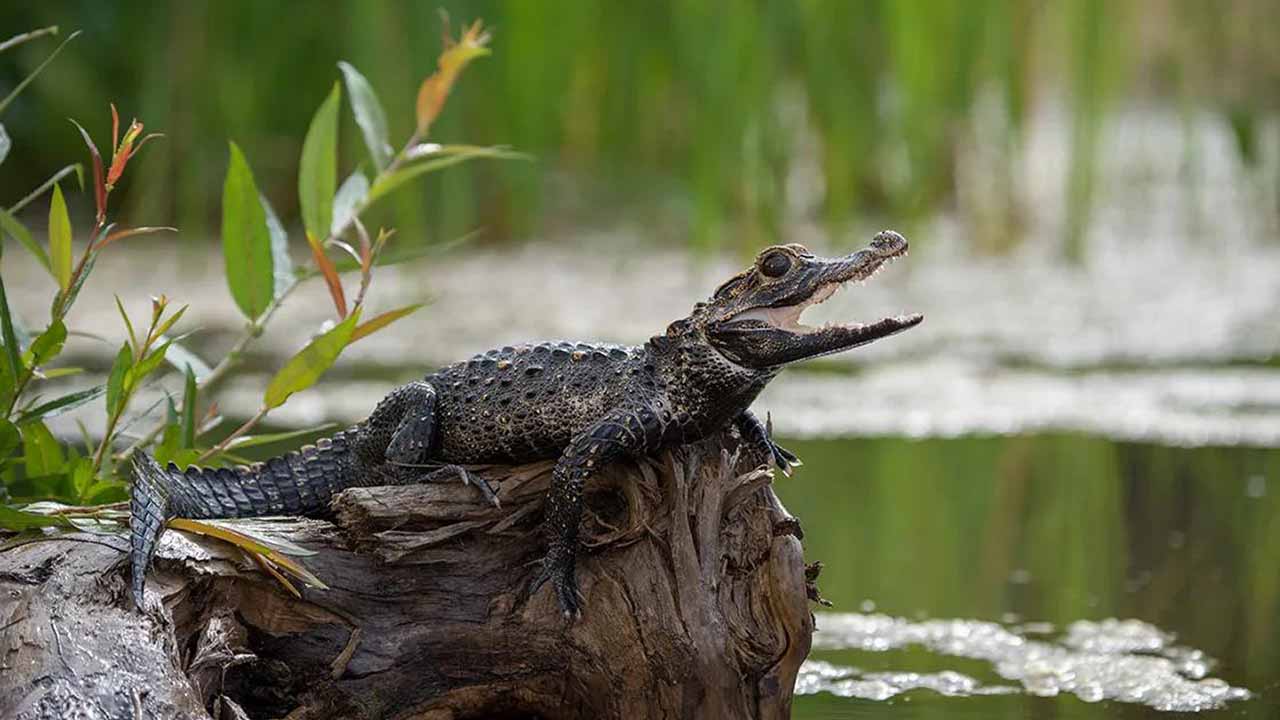
Most Popular Caiman
There aren’t necessarily “popular” caimans in the traditional sense, but eight species roam the freshwater habitats of Central and South America, each with unique characteristics. Here’s a closer look at some of the most recognizable.
1. Spectacled Caiman (Caiman crocodiles)
| This widely distributed and adaptable species is the most common caiman, earning the nickname “common caiman.” They can grow up to 8 feet (2.4 meters) long and have bony ridges around their snouts that resemble spectacles, hence the name. | 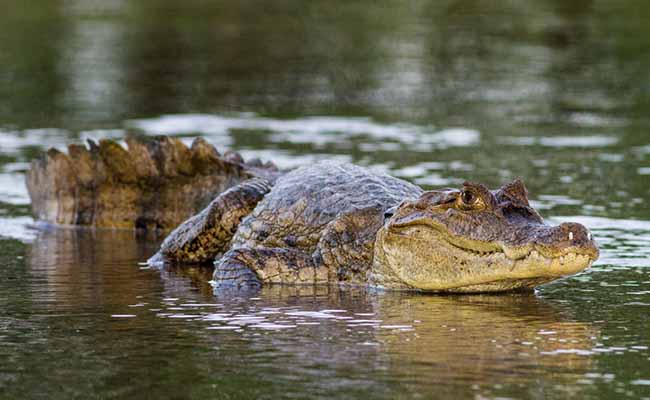 |
2.Black Caiman (Melanosuchus niger)
| The undisputed heavyweight champion of the caiman world, the black caiman can reach a whopping 15 feet (4.5 meters) in length. These apex predators have a sleek black body and are known for their aggressive temperament. | 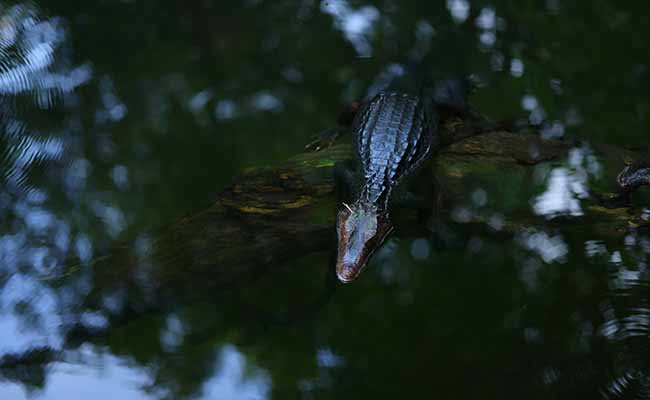 |
3.Yacare Caiman (Caiman yacare)
| Found in Argentina, Bolivia, Brazil, and Paraguay, the yacare caiman is known for its bony armor plates and shorter, wider snout compared to other species. They’re social creatures and can often be seen basking in the sun together in large groups. | 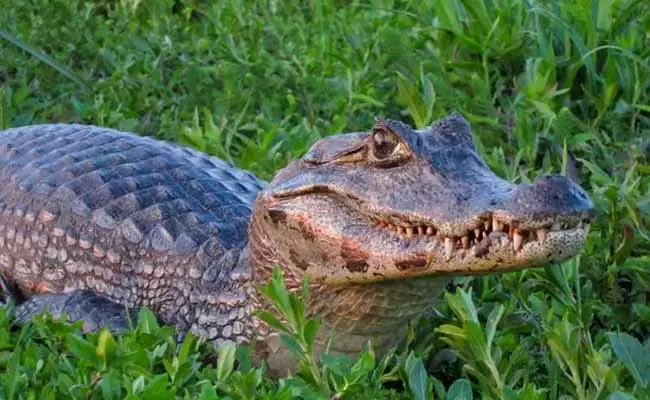 |
4. Broad-snouted Caiman (Caiman latirostris)
| True to its name, the broad-snouted caiman boasts a wide snout ideal for crushing prey like snails and crabs. Growing up to 10 feet (3 meters) long, they are the second-largest caiman species, after the black caiman. | 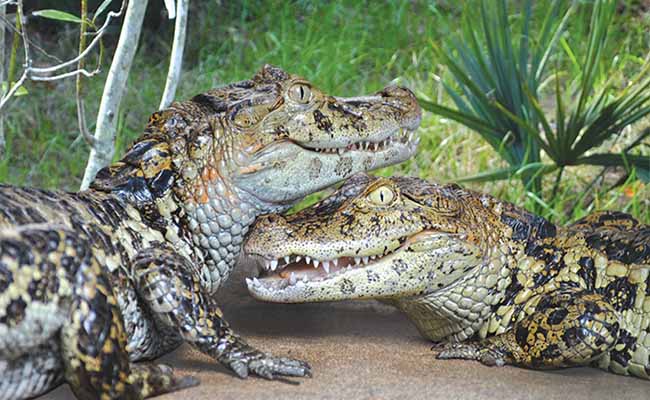 |
5.Cuvier’s Dwarf Caiman (Paleosuchus Palpebrosus)
| The smallest of all caiman species, Cuvier’s dwarf caiman only reaches a length of about 4.5 feet (1.4 meters). These shy, nocturnal creatures are insectivores, feeding mainly on snails, insects, and crustaceans. | 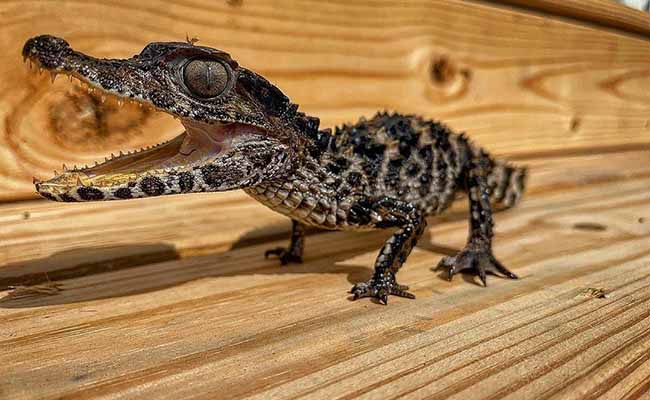 |
6.Müller’s Dwarf Caiman (Paleosuchus trigonatus)
| Another dwarf species, Müller’s dwarf caiman, is slightly larger than Cuvier’s dwarf caiman, growing up to 5 feet (1.5 meters) long. They have a similar insectivorous diet and secretive lifestyle. | 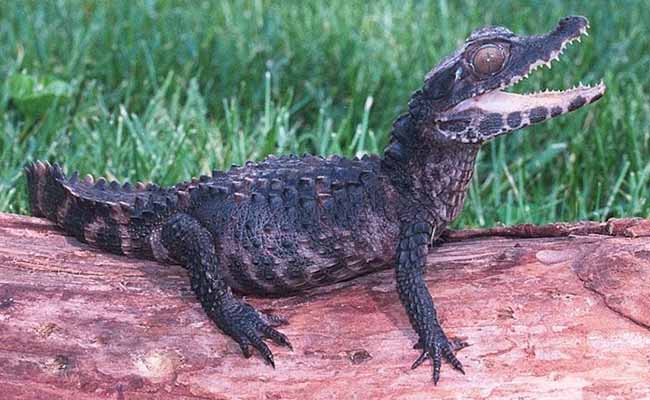 |
7.Paraguay Caiman (Caiman yacare)
| Paraguayan Caiman This subspecies of the Yacare Caiman is smaller than its Yacare cousin, typically only reaching about 6.6 feet (2 meters) in length. They are found in the Pantanal wetlands of South America. | 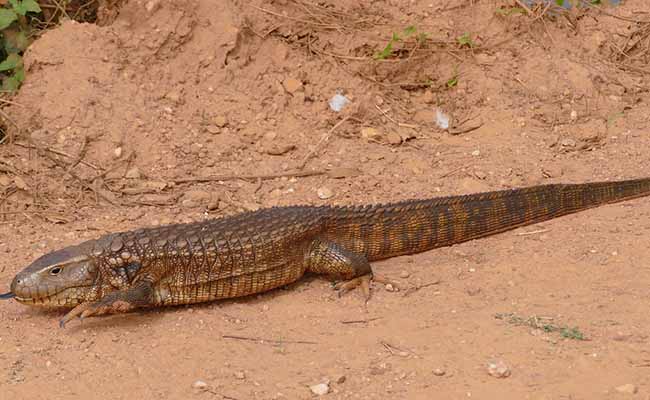 |
8.Apaporis Caiman (Caiman apaporisensis)
| This recently identified species was only classified in 1996. Apaporis caimans are similar in appearance to the spectacled caiman, but have a narrower snout and more widely spaced teeth. | 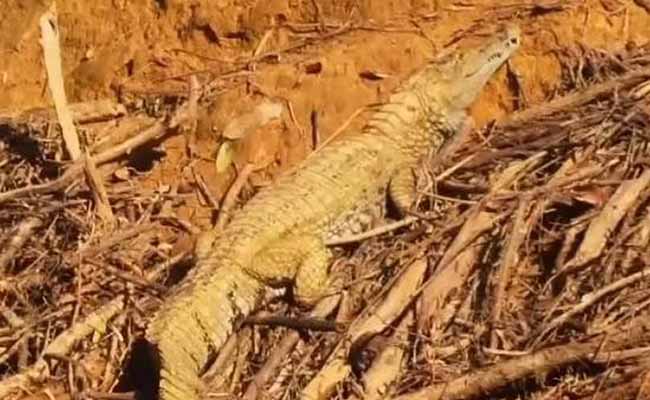 |
Caimans Facts
Caimans are fascinating creatures that belong to the alligator family. While they may look similar to alligators, the two have some key differences. Caimans are smaller and have a more slender build compared to alligators. They are also found in different regions of the world, with caimans primarily living in Central and South America.
Interesting Facts about Caimans
1. Caimans have excellent eyesight and hearing, making them skilled hunters in the water. They primarily feed on fish, birds, and small mammals.
2. Caimans are cold-blooded reptiles, which means they rely on external sources of heat to regulate their body temperature. They can often be seen basking in the sun to warm up.
3. They are social animals and can be found living in groups called congregations. These groups help protect them from predators and allow them to communicate with one another.
4. Like alligators, caimans have powerful jaws filled with sharp teeth. They use these teeth to catch and hold onto their prey while feeding.
5. Caimans play an important role in their ecosystems by helping to control fish populations and maintaining a healthy balance in wetland habitats.
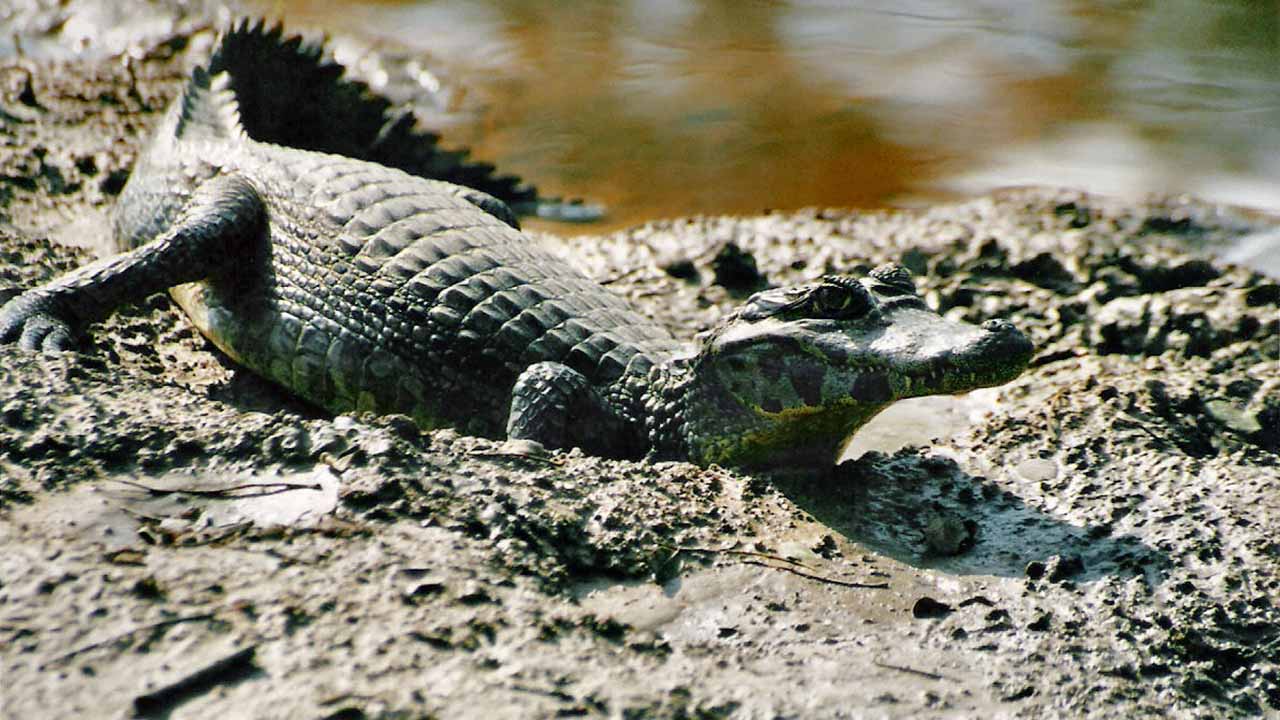
Are Alligators Good Pets?
While caimans may seem intriguing, it’s important to remember that they are wild animals and not suitable pets for most people. Caimans require specialized care and a large habitat to thrive, making them challenging to keep in a home environment. Additionally, caimans can be dangerous if not handled properly, as they have the potential to inflict serious harm with their powerful jaws.
Caiman vs Alligator
| Characteristic | Alligator | Caiman |
| Geographic Range | Primarily found in the United States and China | Found in Central and South America |
| Snout Shape | Broad and U-shaped | Narrower and V-shaped |
| Teeth Arrangement | Upper teeth are not visible when the mouth is closed | Upper teeth, often visible when the mouth is closed |
| Size | Generally larger (up to 15 feet) | Smaller (up to 8 feet) |
| Habitat Preference | Freshwater habitats, such as swamps and marshes | Similar freshwater habitats, but also found in brackish waters |
| Conservation Status | Varied, with some species endangered | Some species are threatened or of the least concern |
| Behavior | Generally less aggressive | Can be more aggressive and territorial |
End of the Line
Caimans are fascinating reptiles that play a vital role in their ecosystems. While they share similarities with alligators, such as their habitat and diet, caimans have distinct features and behaviors that set them apart. Understanding and appreciating these differences can help us better appreciate the diversity and complexity of the natural world.


Leave a comment